Mpangha Rocks Red Top Zebra – Maylandia Sp. Emmiltos – Lake Malawi Cichlid, Beautiful African Cichlid, Easy Care Community Fish for Beginners and Enthusiasts Alike
£31.99 Original price was: £31.99.£27.10Current price is: £27.10.
Welcome the vibrant Mpangha Rocks Red Top Zebra, a stunning Maylandia Sp. Emmiltos from Lake Malawi. This colorful fish thrives in community tanks, showcasing its striking red patterns. Ideal for aquarists seeking beautiful inhabitants. Perfect for both beginners and experienced fish keepers.
1001 in stock
Species Introduction
The Mpangha Rocks Red Top Zebra, scientifically referred to as Maylandia sp. Emmiltos, is a captivating member of the Lake Malawi cichlid family. Originating from the rocky shores of Lake Malawi in East Africa, this vibrant freshwater fish is celebrated for its striking coloration and unique patterns. The natural habitat of the Mpangha Rocks Red Top Zebra consists of rocky environments where they find shelter among the crevices and caves. These habitats are essential for their well-being, providing not only hiding spots but also breeding grounds. As an African cichlid, they exhibit a variety of colors, primarily characterized by their bold red and blue hues that make them a stunning addition to any aquarium. Their natural behavior includes territoriality and social interactions, which are fascinating to observe, making them a favorite among aquarists who appreciate the beauty and complexity of cichlid species.
Care Requirements Dashboard
Essential Care Guide for Your Mpangha Rocks Red Top Zebra – Maylandia Sp. Emmiltos – Lake Malawi Cichlid
| Optimal Living Conditions | |
|---|---|
| Water Temperature | 24-27°C (75-81°F) |
| pH Level | 6.5-7.5 |
| Water Hardness | 4-12 dKH |
| Minimum Tank Size | 80L (20 gal) |
| Salinity | Freshwater |
| Care Level | Beginner Friendly |
✓ Care Level: Moderate
Tank Size: Minimum 75 gallons
Water Temperature: 75-82°F (24-28°C)
pH Level: 7.8-8.6
Hardness: 10-20 dGH
To ensure the health and well-being of your Mpangha Rocks Red Top Zebras, it is crucial to provide them with a spacious environment. A minimum tank size of 75 gallons is recommended, as these fish are territorial and require ample space to establish their territories. The water temperature should be maintained between 75°F and 82°F, with a pH level ideally between 7.8 and 8.6. Hardness levels should range from 10 to 20 dGH, as these parameters mimic their natural habitat, promoting optimal health and vibrant coloration. Regular water changes and monitoring of water quality are essential components of their care routine.
Natural Behavior & Temperament
The Mpangha Rocks Red Top Zebra exhibits a dynamic and engaging personality that makes them a joy to observe in an aquarium setting. Known for their territorial nature, these cichlids are often seen establishing and defending their own space within the tank. Their behavior includes swimming patterns that are both energetic and purposeful, as they navigate through their environment with agility. They are generally social fish, but it is essential to provide adequate hiding spots and territories to reduce aggression among tank mates. In a community tank, they may display dominance, particularly during breeding seasons, but with proper management and monitoring, they can coexist peacefully with other compatible species. Understanding their natural behavior is key to creating a harmonious aquarium environment.
Tank Setup Guide
Setting up an ideal environment for your Mpangha Rocks Red Top Zebras involves replicating their natural habitat as closely as possible. Begin with a spacious tank that allows for ample swimming space and territories. The substrate should consist of fine gravel or sand, as this mimics the lakebed of Lake Malawi. Incorporate plenty of rocks and caves, which provide hiding spots and breeding areas. Decorate the tank with driftwood and aquatic plants that can withstand their territorial nature, such as Anubias or Java Fern. Ensure that the tank is well-filtered and has adequate water circulation to maintain water quality. Lighting should be moderate, as bright lights can stress these fish. By creating a well-structured environment, you will not only enhance the aesthetic appeal of your aquarium but also promote the health and happiness of your fish friends.
Water Quality Management
Maintaining optimal water quality is vital for the health of your Mpangha Rocks Red Top Zebras. Regular testing of water parameters is essential to ensure they remain within the recommended ranges. The pH level should be monitored closely, aiming for a range of 7.8 to 8.6, as fluctuations can lead to stress and health issues. Temperature should be kept stable between 75°F and 82°F, with a heater used to maintain warmth during cooler months. Hardness should be maintained between 10 to 20 dGH, as this mimics their natural lake environment. Regular water changes, approximately 20-30% weekly, help to remove toxins and replenish essential minerals. Utilizing a high-quality filtration system will also aid in maintaining clear and clean water, promoting a healthy environment for your cichlid companions.
Feeding & Nutrition
✓ Feeding Schedule: Twice daily
Diet: High-quality cichlid pellets, frozen or live foods, vegetable matter
Feeding your Mpangha Rocks Red Top Zebras a balanced diet is crucial for their growth, health, and vibrant coloration. A high-quality cichlid pellet should form the basis of their diet, supplemented with frozen or live foods such as brine shrimp, daphnia, and bloodworms. Additionally, incorporating vegetable matter, such as spirulina flakes or blanched zucchini, provides essential nutrients and aids in digestion. It is recommended to feed them twice daily, offering only what they can consume within a few minutes to prevent overfeeding and maintain water quality. Observing their feeding behavior can also provide insight into their health; a healthy fish will eagerly accept food and display vibrant colors.
Compatibility Guide
When considering tank mates for your Mpangha Rocks Red Top Zebras, it is essential to choose species that can coexist peacefully while minimizing aggression. Ideal companions include other Lake Malawi cichlids, such as the Yellow Labs (Labidochromis caeruleus) and the Blue Dolphin (Cyrtocara moorii). However, avoid keeping them with smaller, more timid fish, as they may become targets of aggression. It is also advisable to steer clear of overly aggressive species that could stress your cichlids. Establishing a community tank with a balanced mix of compatible species will enhance the overall dynamics and provide a thriving aquatic environment. Regular observation of interactions among tank mates is crucial to ensure harmony within the aquarium.
Health & Wellness
Maintaining the health and wellness of your Mpangha Rocks Red Top Zebras involves regular monitoring for signs of illness and stress. Common health issues in cichlids include ich, fin rot, and bloat. To prevent these conditions, ensure stable water parameters, provide a well-balanced diet, and avoid overcrowding in the tank. Regular water changes and tank maintenance are essential to reduce stressors that could lead to illness. Signs of health issues may include changes in behavior, such as lethargy, loss of appetite, or unusual swimming patterns. Early detection and prompt treatment are crucial for recovery. If any health concerns arise, consult with an aquarium professional for appropriate treatment options.
Breeding Information
Breeding the Mpangha Rocks Red Top Zebra can be a rewarding experience for aquarists. These cichlids are mouthbrooders, meaning the female carries the fertilized eggs in her mouth until they hatch. To encourage breeding, provide a separate breeding tank with suitable hiding spots and flat surfaces for egg laying. The ideal conditions for breeding include slightly higher temperatures (around 80°F) and stable water parameters. Once the female lays eggs, she will collect them in her mouth for protection. After approximately three weeks, the fry will be released, and it is essential to provide them with appropriate food, such as finely crushed flakes or specialized fry food. Observing the breeding process can be fascinating, but it requires careful attention to ensure the safety and health of both the parents and the fry.
Acclimation Process
Introducing your Mpangha Rocks Red Top Zebras to a new tank requires a careful acclimation process to minimize stress and ensure a smooth transition. Begin by floating the sealed bag containing the fish in the aquarium for about 15-20 minutes to equalize the temperature. After this, gradually introduce small amounts of tank water into the bag every 5-10 minutes for about an hour. This process helps the fish adjust to the new water parameters. Once acclimated, gently release the fish into the tank using a net to avoid adding any transport water that may contain harmful substances. Monitoring the fish closely during the first few days in their new environment is crucial to ensure they adapt well and display normal behavior.
Long-term Care
Long-term care of your Mpangha Rocks Red Top Zebras involves consistent attention to their habitat and health needs. As they grow, monitor their size and adjust tank conditions accordingly. These cichlids can reach a maximum length of approximately 6 inches, so ensure that your tank remains spacious and well-structured. Regular water quality testing and maintenance are essential to keep their environment stable. Additionally, be observant of their behavior and interactions with tank mates, making adjustments as necessary to prevent aggression. With proper care, these beautiful fish can thrive and live for several years, providing joy and beauty to your aquarium.
Natural Habitat Recreation
Recreating the natural habitat of the Mpangha Rocks Red Top Zebra in your aquarium is essential for their well-being. This involves mimicking the rocky environments of Lake Malawi, where these fish thrive. Incorporate a variety of rocks, caves, and crevices to provide shelter and breeding areas. The substrate should be fine gravel or sand, allowing for natural behaviors such as digging and foraging. Additionally, consider adding plants that can tolerate the conditions of a cichlid tank, as they not only enhance the aesthetic appeal but also provide hiding spots. By carefully designing the aquarium layout, you can create a biotope that reflects their natural habitat, promoting the health and happiness of your fish friends.
Seasonal Care Adjustments
Seasonal changes can impact the care of your Mpangha Rocks Red Top Zebras, particularly in terms of temperature and lighting. During the warmer months, ensure that the tank temperature remains stable, as fluctuations can stress the fish. In cooler months, a reliable aquarium heater is essential to maintain the optimal temperature range. Additionally, consider adjusting the lighting schedule to mimic natural daylight cycles, which can influence breeding behaviors and overall health. Regular monitoring of water parameters during seasonal transitions is crucial to ensure a stable environment for your cichlid companions.
Expert Tips
For aquarists seeking to provide the best care for their Mpangha Rocks Red Top Zebras, consider implementing the following expert tips. First, establish a routine for water testing and changes to maintain optimal water quality. Second, provide a varied diet that includes high-quality pellets, live foods, and vegetable matter to promote health and coloration. Third, observe their social interactions and adjust tank mates as necessary to prevent aggression. Lastly, engage with your fish by providing enrichment activities, such as rearranging decorations or introducing new hiding spots, to stimulate their natural behaviors and keep them active.
Troubleshooting
In the event of common issues arising with your Mpangha Rocks Red Top Zebras, it is important to have a troubleshooting plan in place. If you notice signs of illness, such as lethargy or loss of appetite, first check the water parameters to ensure they are within the recommended ranges. If aggression among tank mates occurs, consider rearranging the tank layout to disrupt established territories. In cases of breeding behavior leading to stress, providing additional hiding spots can help mitigate conflicts. Being proactive and attentive to your fish’s needs will greatly enhance their well-being and longevity.
Scientific Background
The Mpangha Rocks Red Top Zebra belongs to the cichlid family, which is known for its vast diversity and adaptability. Cichlids are characterized by their complex behaviors and social structures, making them a subject of interest for researchers and aquarists alike. The unique adaptations of these fish, including their mouthbrooding reproductive strategy, highlight their evolutionary success in diverse aquatic environments. Conservation efforts are crucial for the preservation of their natural habitats, as pollution and overfishing threaten their populations. By understanding the scientific background of the Mpangha Rocks Red Top Zebra, aquarists can better appreciate their role in the ecosystem and the importance of responsible fish keeping.
Advanced Care Techniques
For experienced aquarists looking to take their care of Mpangha Rocks Red Top Zebras to the next level, consider implementing advanced techniques. Establishing a breeding program can be rewarding, requiring careful selection of breeding pairs and monitoring of fry development. Additionally, experimenting with different food types and supplements can enhance coloration and overall health. Regularly engaging with your fish through observation and interaction will foster a deeper connection and understanding of their needs. By continually educating yourself on cichlid care and behavior, you can ensure a thriving environment for these beautiful aquatic companions.
Frequently Asked Questions
Q: How much Mpangha Rocks Red Top Zebra food should I feed my fish?
Feeding quantities for Mpangha Rocks Red Top Zebra should be tailored to the size and number of your fish. A general guideline is to provide an amount that can be consumed within 2-3 minutes. Overfeeding can lead to poor water quality, so it is crucial to monitor your fish and adjust accordingly. Observe their behaviour; if they are eagerly eating and finishing the food quickly, you may increase the quantity slightly. Conversely, if food is left uneaten, reduce the amount. Regularly assess your feeding routine to ensure optimal health.
✓ Expert Tip
Consider using a feeding ring to help contain the food and prevent it from spreading too much, which can help in monitoring consumption.
Q: How frequently should I feed my Lake Malawi cichlids?
For Lake Malawi cichlids, feeding frequency can vary based on their age and activity level. Generally, adult cichlids do well with feeding once or twice daily. Younger fish or those in a breeding condition may require more frequent feedings—up to three times a day. It is essential to provide consistent feeding times to establish a routine. Always ensure that the food is appropriate for their dietary needs, and keep an eye on their body condition to avoid obesity.
✓ Expert Tip
Vary their diet occasionally by incorporating other high-quality foods to ensure a well-rounded nutrition.
Q: Which fish species can consume Mpangha Rocks Red Top Zebra food?
Mpangha Rocks Red Top Zebra food is specifically formulated for cichlids, particularly those from Lake Malawi, such as the Mbuna and other herbivorous and omnivorous species. This food promotes vibrant colours and healthy growth. However, it is vital to ensure compatibility with other species in your aquarium. Fish species that thrive on high-quality pellets or flakes, such as certain types of tetras or barbs, may also benefit from occasional inclusion in their diet. Always monitor fish behaviour and adjust feed types as needed.
✓ Expert Tip
Introduce new foods gradually to prevent digestive upset, especially when mixing with existing diets.
Q: How should I properly store Mpangha Rocks Red Top Zebra food?
To maintain the freshness of Mpangha Rocks Red Top Zebra food, store it in a cool, dry place away from direct sunlight. Ideally, keep it in an airtight container to prevent moisture and pests from compromising the quality. If the food comes in a resealable bag, ensure it is sealed tightly after each use. It is advisable to label the container with the purchase date to keep track of its shelf life, which is typically up to a year if stored correctly.
✓ Expert Tip
Consider using desiccant packets in the storage container to help absorb any moisture.
Q: Will Mpangha Rocks Red Top Zebra food affect my water quality?
While Mpangha Rocks Red Top Zebra food is nutritionally balanced, overfeeding can lead to deteriorating water quality. Uneaten food decomposes, contributing to ammonia and nitrite spikes, which can harm your fish friends. To mitigate this, stick to recommended feeding amounts and monitor your tank regularly. Regular water changes and proper filtration will assist in maintaining optimal water conditions. Additionally, keeping a close eye on your fish’s eating habits will help you adjust feeding as necessary.
✓ Expert Tip
Incorporate a high-quality water test kit to keep track of ammonia, nitrite, and nitrate levels.
Q: Is Mpangha Rocks Red Top Zebra food suitable for breeding fish?
Yes, Mpangha Rocks Red Top Zebra food can be beneficial for breeding fish, as it is high in protein and essential nutrients that support reproductive health and fry growth. When breeding cichlids, consider supplementing their diet with live or frozen foods such as brine shrimp or daphnia, which can enhance the nutritional value and stimulate spawning behaviours. It is essential to maintain a balanced diet for both the breeding pair and their fry to ensure healthy development.
✓ Expert Tip
Transition to a high-protein diet during breeding to promote optimal health and growth in fry.
Q: How do I transition my fish to Mpangha Rocks Red Top Zebra food?
Transitioning your fish to Mpangha Rocks Red Top Zebra food should be done gradually to prevent digestive issues. Start by mixing a small amount of the new food with their current diet, gradually increasing the proportion of the new food over a week or so. Observe your fish for any signs of stress or refusal to eat. If they show reluctance, slow down the transition process. This gradual approach helps your fish adjust to the new diet without causing undue stress.
✓ Expert Tip
Monitor their behaviour and eating habits closely during the transition to ensure they are adapting well.
Q: What ingredients are contained in Mpangha Rocks Red Top Zebra food?
Mpangha Rocks Red Top Zebra food typically contains high-quality ingredients such as fish meal, spirulina, and various vitamins and minerals essential for cichlid health. The inclusion of spirulina not only enhances colouration but also supports digestive health. It is crucial to check the packaging for specific ingredient details, as formulations may vary. A well-balanced diet ensures your fish receive proper nutrition for growth, vitality, and overall health.
✓ Expert Tip
Consider rotating different food types to provide a varied and balanced diet.
Q: How does Mpangha Rocks Red Top Zebra food support fish health and growth?
Mpangha Rocks Red Top Zebra food is formulated to provide essential nutrients that promote optimal growth and health. Its high protein content supports muscle development, while vitamins and minerals enhance immune function and overall vitality. Regular feeding with this high-quality food can lead to improved colouration and healthier fish. Providing a consistent diet tailored to their specific needs will ensure your aquatic companions thrive.
✓ Expert Tip
Observe your fish for signs of growth and health to ensure the food meets their needs.

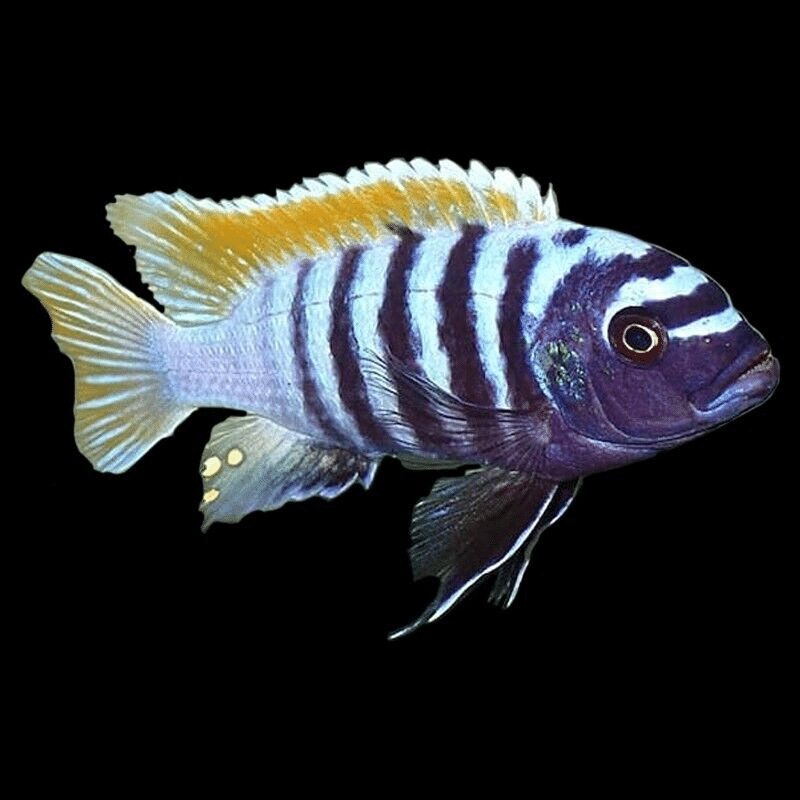
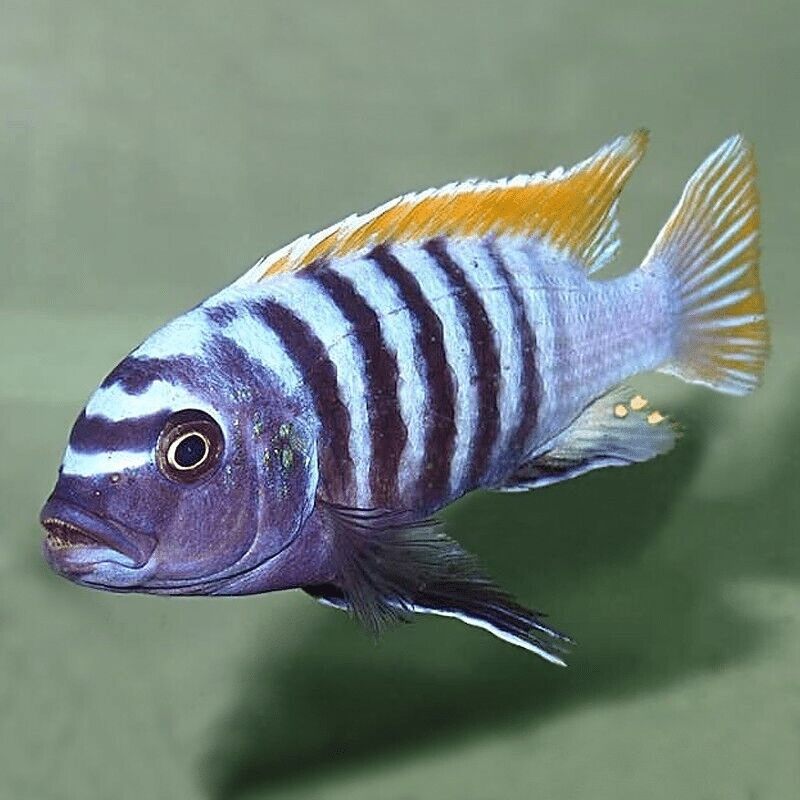
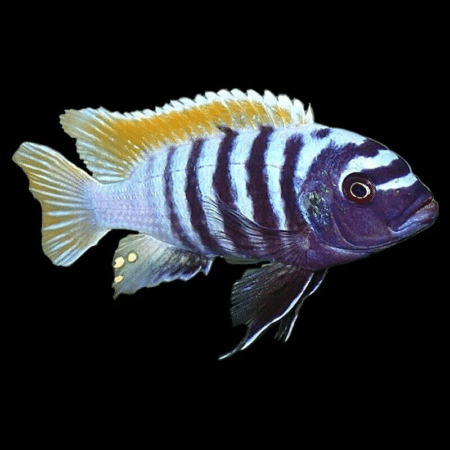
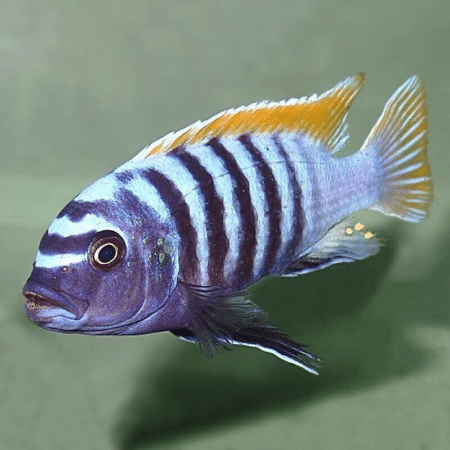
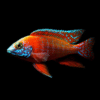
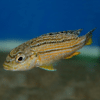









Emily Carter (verified owner) –
I recently added the Mpangha Rocks Red Top Zebra Cichlid to my aquarium, and I couldn’t be more thrilled! These vibrant, colorful fish have transformed my tank into a lively underwater paradise. After about three weeks, I’ve noticed they’ve acclimated beautifully and interact well with my other freshwater fish. Their striking red tops are simply captivating and they swim with such grace and personality. Compared to some other cichlids I’ve had, these guys are not only stunning but also relatively easy to care for. They thrive in a well-maintained community tank, and they’re less aggressive than I expected. Just be sure to provide plenty of hiding spots and decor to keep everyone happy. I highly recommend these fish to both experienced hobbyists and those new to the aquarium world! They require a bit of space to swim freely, so I’d suggest at least a 30-gallon tank. Overall, a fantastic addition that has brought so much joy to my aquatic setup!